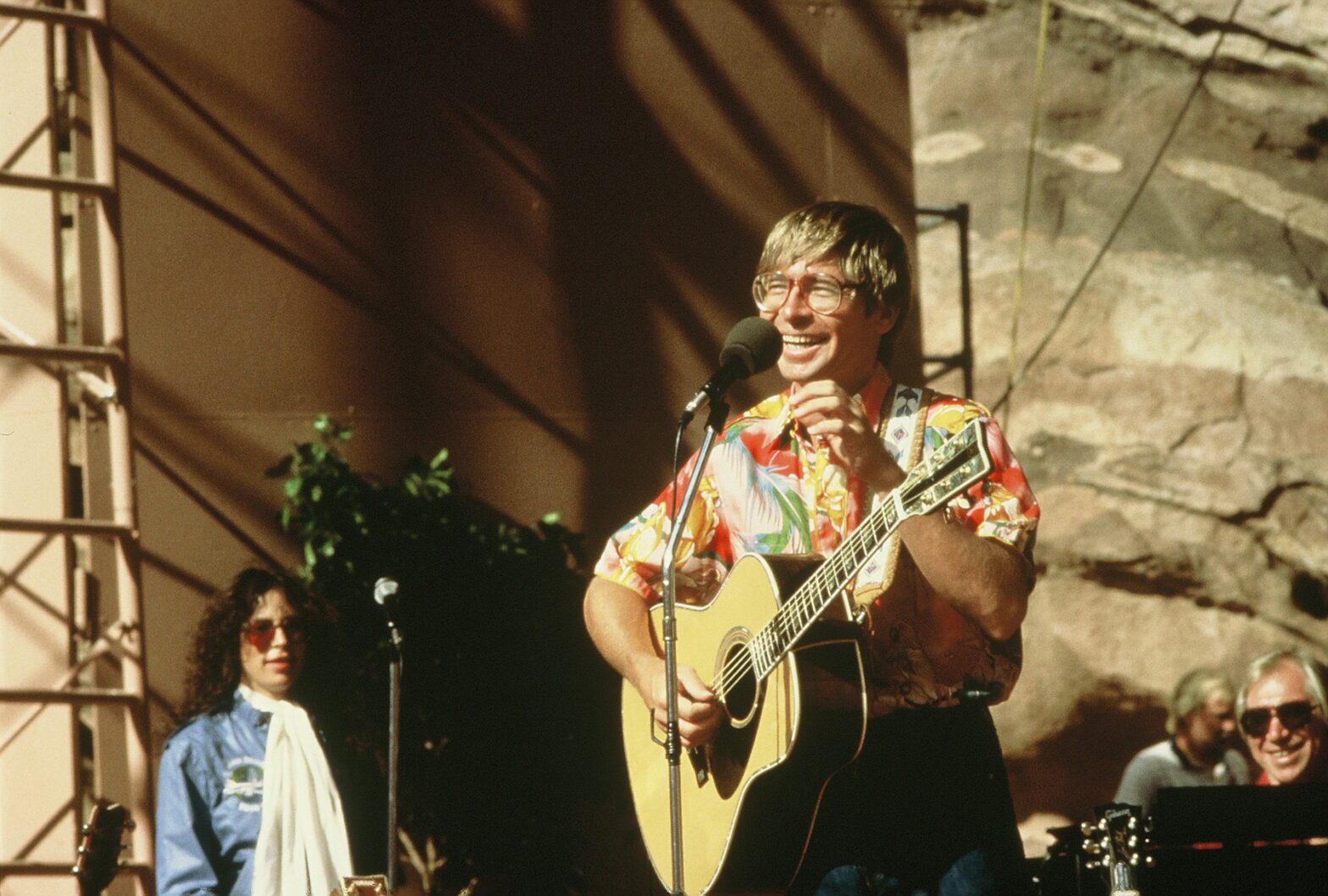Guest Writer: Randall Peterson (randallleepeterson@gmail.com)
The Darkness
Monday morning, October 13, 1997, I woke up to the news of the death of the best friend I had never met. It is impossible to believe that it has now been 25 years since John Denver was killed in a plane crash in waters outside of Monterey, California. As a native Coloradan who had been intimately touched by the magic and wonder that John brought to the world, I remember only being in a heavy fog that day. I was not alone. There was a dark cloud hanging over the Centennial State, the shared grief of a collective loss. News stations showed pictures of John in his passion and natural buoyancy, while his songs of innocence, simplicity and harmony with nature once again graced the airwaves.
It is a testimony to his legacy and to his family’s benevolence that a celebrity of John Denver’s status had a public funeral. While I would never truly say goodbye to him, I needed to pay my respects. I lined up in the early morning hours at Faith Presbyterian Church in Aurora, joined by others through the camaraderie of quiet tears. As the early morning chill gave way to the warming sun, the church began playing his music. The haunting beauty of “Sunshine On My Shoulders” as the sad day broke was not lost on anyone.
Early in the service, a beautiful photo was revealed of Denver in the mountains, wearing denim and holding a blue guitar that mirrored the Colorado sky. It was the cover photo for his autobiography Take Me Home. The lyrics of the song, “The Wings That Fly Us Home,” filled the chamber. The song was written about the death of his own father but eerily prescient about his own death in a plane crash:
“Yesterday I had a dream about dying,
about laying awake and then flying,
how the moment at hand is the only thing we really own.
And I lay in my bed and I wonder,
after all that is said and is done for,
why is it thus, we are here and so soon we are gone.”
Among those who spoke was his friend and the co-founder of Denver’s Windstar Foundation, Tom Crum. To this day, I remember Crum’s words as much as I remember the lyrics to John’s songs. He said, “I hate that John died. But I am so glad that he lived.” While I felt that a light had gone out of the world that day, Crum’s words and a particular line in “The Wings That Fly Us Home” stuck with me and helped rekindle John’s light: “Though the singer is silent, there still is the truth of his song.” John Denver has been silent and gone from this world for 25 years this month, but there is indeed still the truth of his song.
The Dawning
The opportunity to engage in the act of creation is the lasting legacy of all artists. To be able to spin the potter’s wheel, from the genesis of an inspiration to the manifestation of a reality that transcends our brief years on earth is a gift befitting only the few. Yet the magic doesn’t just happen. It takes countless risks.
So it was for John. He didn’t inherit his throne on the literal and figurative top of Starwood mountain in Aspen; John took the road less traveled. He quit college, moved to Los Angeles to pursue his music, faced the disapprobation of his Air Force father and the dissolution of his singing group (The Mitchell Trio). Then he doubled down on his leap of faith to become a solo artist. Driven by an unending passion to write meaningful songs that reflected his values of love, nature and family, his passion became a life of purpose, and his purpose became our pleasure. By being true to his own heart, he was able to touch our own.
On July 21, 1972 in Morrison, Colorado, a 29-year-old singer was coming home to a place he had never been before to perform at the iconic Red Rocks Amphitheatre. It was the first of his seventeen appearances there on Stage Rock. It was on that night that “Rocky Mountain High” debuted, when Colorado first heard the love song written to her and introduced the world to the anthem for the Colorado lifestyle. The rest is history: for John, for music, and 18 years later, for me.
The Discovery
The truest definition of timelessness is the act of discovery by new generations separated from the life, time and fame of the artist. It is like the archaeologist who recognizes the worthiness of an ancient treasure from so long ago and marvels at its wonder. There, only the creation of the artist remains, seen by fresh eyes or heard by new ears, and, if merited, it becomes eternal.
Such was my accidental discovery of John Denver. I was 18 years old and getting ready to move to the mountains as a summer camp counselor. I found an old cassette tape of my dad’s, John Denver’s Greatest Hits, and vaguely recalled the chorus of “Rocky Mountain High” followed softly by the word…Colorado. I thought it was fitting theme music for packing for my journey. Although a Colorado native, I had never really known the mountains nor felt their magic until a few weeks earlier. As John sang, I listened and heard truths in the song that I had recently discovered in my own life. His words struck me with the affirmation of all that I valued and all that I was becoming: “He was born in the summer of his 27th year, coming home to a place he’d never been before. He left yesterday behind him, you might say he was born again, you might say he found the key for every door.”
And I did. I’ve spent the past 30 years of my adult life blissfully walking through the doors of self-discovery, endlessly inspired by the wisdom the mountains have given me. All the while I walked with John; he provided the soundtrack for my seclusion, the poetry for my paths.
The Struggle
John Denver’s music was more than a celebration of being on the highest mountain; it allowed us to touch the emotions of our deepest valleys. His own struggles in this world are heard in his melancholic and painfully personal ballads: “Like a Sad Song,” “Fly Away,” “Seasons of the Heart” and “Whispering Jesse.” With two divorces, two DUI arrests, being dropped as an artist from RCA and the ongoing destruction of the environment, Denver sings of the intimacy of loss.
In the changing Colorado today, it is easy to feel similar loss as it is increasingly harder to find the Colorado he sang about. Since 1973, both the Denver Metro and Colorado population have more than doubled. In fact, today more people live in the Denver Metro area alone than lived in the entire state in 1973. We see and feel those changes on I-70, campsites reserved a year in advance, trailheads that can’t be accessed, reservations and timed entry into Rocky Mountain National Park and shuttle buses to Bear Lake and the Maroon Bells.
Yet, the mountains of yesterday, as well as the mountains of tomorrow are still there; and no doubt John would be singing their stories and looking at the positives. In the brilliance of a Colorado autumn, the treasures of aspen gold and sapphire skies await and reward those who seek to discover her glories. The same can be said for those who discover John.
The Statue
It was in October, the month that John left this world, that I went to see his legacy living on at Red Rocks at his exhibit at the Colorado Music Hall of Fame museum, where Denver was the very first inductee. Just steps below Stage Rock is a statue of the songwriter, gifted to The Hall of Fame by the Windstar Foundation. He holds his guitar, its strap famously says “peace” and a grand and glorious eagle rests on his arm. Its sharp and jagged feathers of bronze stretch endlessly upward and seem to mirror the same shape and features of the angular sandstone deposits in its background. So seamless is the art of man and nature that it’s hard to tell where the statue ends and the mountains begin. The statue, titled “Spirit,” stands like a bridge between two worlds. With his feet on the ground and his eyes toward the sky, in statue and substance, John Denver connects our lives to our aspirations, teaching us that they are one in the same; inseparable. As I stared, transfixed by John’s legacy, it was clear that in a world seemingly gone mad that it is his words and his voice that need to be heard, whether again or anew, now more than any time in his career. The song played at John’s funeral came back to me: “Though the singer is silent, there still is the truth of his song.”
Twenty-five years after his death, it is a time for a rediscovery of John Denver and the truth of his songs. It is time for his simple and soulful music to provide peace to a hurting world; to rediscover our common humanity; to cherish and be inspired by the natural world; and to become our fullest, greatest selves. I hate that John died. But I am so glad that he lived.
“It’s in every one of us to be wise.
Find your heart, open up both your eyes.
We can all know everything without ever knowing why.
It’s in every one of us, by and by.”
-
-
- “It’s In Every One of Us” by John Denver
-

